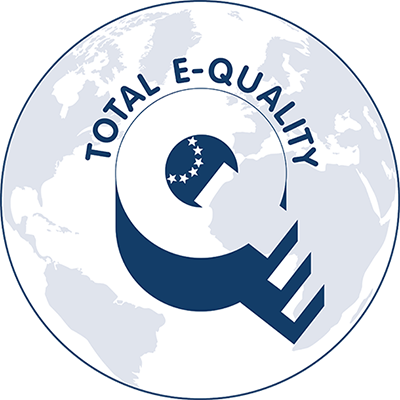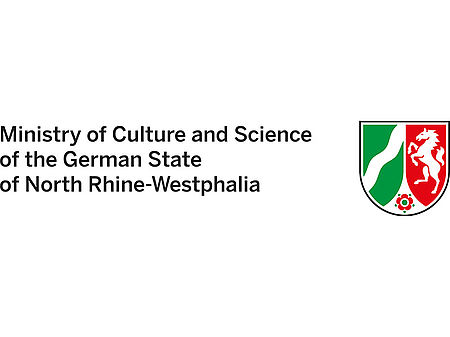An introduction to good research practice, research misconduct and academic integrity
What is research misconduct?
On 6 July 1998, the German Rectors‘ Conference (HRK) provided the following definition as part of its recommendations on how institutions of higher education should deal with research misconduct, which is also known as scientific misconduct or misconduct in science:
“Research misconduct is the intentional or grossly negligent provision of incorrect information in a scientific context, the infringement of intellectual property rights, or any other impairment of others' research work. Cases should be judged on their individual circumstances.”
Categories of research misconduct
Mousavi & Abdollahi, 2020 divide research misconduct into five categories:
- Inventing data, experiments or references.
- Falsifying research by omitting data points or data that do not support the hypothesis; manipulating images.
- Plagiarism: using someone else’s content or ideas without acknowledgement. This includes self-plagiarism, which means reusing content from one’s own previously published articles.
- Failing to attribute authorship; claiming authorship even though no contribution was made by that person. Examples include ghost authorship and honorary authorship.
- Improper conduct in the peer review process, in particular discrimination, making false claims or manipulating the process.
Based on their categorisation, research misconduct would also include the following:
- “Salami slicing”, in other words segmenting the results of a single study into two or more publications.
- Simultaneously submitting a manuscript to multiple scientific journals and/or conferences.
Publishing a translation of an article that has already been published is also considered as plagiarism.
The recommendations from the German Rectors’ Conference also classify the following as misconduct:
- Supplying false information in grant applications and other application processes.
- Sabotaging experimental set-ups and destroying primary data in contravention of discipline-specific principles.
The HRK recommendations also state that responsibility shall be shared by those who actively participate in, or are aware of, others’ misconduct, as well as those who knowingly submit their name as the co-author of a flawed publication or fail to fulfil their supervisory duties.
In the field of life sciences, the concept of research misconduct can also refer to the violation of ethical principles in human or veterinary research. In the context of research on humans or animals, these principles generally include the requirement to furnish proof that the project was reviewed and approved by the responsible ethics commission prior to its execution.
Authors undertaking life-sciences research are also obliged to declare any conflicts of interests in a dedicated section of the publication. Examples include research that is financed by companies or institutions, since this may give them a vested or commercial interest in the results. Deliberately providing misleading information on a declarable conflict of interest – or failing to disclose it altogether – may be regarded as research misconduct. The same applies to researchers who falsely claim affiliation with an institution.
Scientific communities, research institutions, professional societies and journal publishers generally provide their own definition of what is considered to be research misconduct based on the nature of their particular discipline. The websites of these organisations are therefore a good source of information on this topic.
What is good research practice?
Research misconduct can be defined as a violation of good research practice. The “Guidelines for Safeguarding Good Research Practice” published by the German Research Foundation (DFG) aim to help research institutions create a deeply rooted culture of academic integrity at the heart of their internal structures, processes and actions.
As of August 2019, universities and non-university research institutions shall only be eligible to receive DFG funding on condition that they implement the 19 guidelines contained in the Code in a legally binding manner. A transition period until 31 July 2021 was granted to any institutions that enforced a legally binding implementation of the previous regulations from the DFG white paper “Safeguarding Good Scientific Practice”.
The first 17 guidelines focus primarily on the principles of good research practice, while the final two guidelines describe the procedures to follow in the event of non-compliance with these principles.
In response to the legal requirement to implement these guidelines, most institutions of higher education and non-university research institutions have put specific structures in place to encourage good research practice and academic integrity. As well as defining clear processes, this also includes integrating the topic into training programmes on good research practice and appointing an ombudsperson as a point of contact. Many institutions offer more information on this topic on their websites.
Researchers can also turn to the “German Research Ombudsman” (Ombudsman für die Wissenschaft), a committee appointed by the German Research Foundation (DFG).
To sum up: applying the principles of good research practice ensures that scientists remain committed to the acquisition of knowledge. At the same time, these principles underline researchers’ responsibility for their results and govern how researchers interact with each other.
Correction and retraction of scholarly articles
Should it emerge that a publication contains errors, or that the authors failed to comply with good research practice, this publication should either be corrected or retracted (depending on the severity of the error or non-compliance) in order to prevent it from being used as a basis for future research. This is accomplished by publishing a corresponding notice, which is linked to the original publication. Sox & Rennie (2006) propose the following courses of action:
- Correction: a notice published to rectify minor errors that can be easily corrected and that do not call into question the article’s principal conclusions.
- Expression of Concern: a notice published in response to an initial suspicion on the part of the publisher that the publication may contain errors or involve misconduct.
- Retraction: action taken in response to more significant errors that call the principal conclusions of the article into question or in response to research misconduct.
Depending on how long it takes to review the article, several weeks or months may elapse between an expression of concern and, where applicable, the actual retraction of the paper.
Ideally, the notice should provide information on which article is affected by these errors, what type of errors or inconsistencies it contains, who initiated the process, which parts of the publication are affected, and the extent to which the author concurs with the notice. It should also list the possible reasons for correcting or retracting the publication.
Depending on the severity of the errors and the publisher’s code of practice, the original publication will either be retained, replaced, watermarked or – in rare cases – deleted, except for the metadata. Entries in bibliographic databases will also be amended accordingly, though some time may elapse before this latter step is taken.
The procedure for correcting or retracting a publication may be initiated by anyone involved in the system of scholarly research. Nevertheless, this obligation weighs particularly heavily on authors since they are responsible for the content of their publication. The entity that published the original article has a duty to initiate the actual process of correction or retraction.
Many journals now have a “Retraction Policy” that defines how this process is handled. You can find more information on this topic by visiting the websites of the respective journals.
It is important to note that many cases of misconduct may go undetected, since a certain number of publications that are based on errors or misconduct will never be discovered, corrected or retracted. Caution and a critical eye should therefore always be exercised when consulting academic literature.
Why retracted publications should not be cited
Scientists should not cite retracted articles unless writing a paper on the subject of research misconduct itself. Citing retracted articles can lead to the spread of misinformation, and the inclusion of such publications in research syntheses such as reviews and meta-analyses can distort the results. Before submitting a manuscript, authors should therefore ideally check their list of references to determine whether any of the cited publications have been retracted.
For example, CrossRef can be used to search for publications that have a digital object identifier (DOI) to discover if their status has changed.
Many publishers also include a button next to each article that users can click to access its current status, including any updates, corrections or retractions.
Multidisciplinary databases such as PubMed also offer the option to filter publication type by "corrections", "retractions" and "expressions of concern" to identify items that fall into these categories. However, there may be a time lapse before an article’s new status is updated in the database.
Some reference management software programs – e.g. Endnote and Zotero – also draw on information from the Retraction Watch Database, which tracks retractions, corrections and expressions of concern; any entries in the bibliography that are flagged in the database are marked accordingly. There is no guarantee that the database is complete, however, and some items may be missing.
Note that deliberate and malicious citing of retracted literature can also be regarded as a form of research misconduct.
Errors, research misconduct and open access
There is currently no evidence to suggest that open access publications are affected by corrections or retractions any more or less frequently than closed-access publications.
Publications in open access journals are subject to the same kind of peer review process as all other publications. The peer review process does not, however, spot all errors or detect all cases of actual misconduct. There are many reasons for this, including reviewers having an excessive workload, the inability to check data properly due to missing information, and skilful deception in cases of deliberate fraud.
Occasionally, a researcher may even deliberately submit their article to a “predatory journal” in order to avoid the kind of comprehensive review that would normally prevent their work from being published.
How paper mills and academic ghostwriting fuel research misconduct
Reports of ‘paper mills’ that sell fake scientific papers on demand have been increasing for some time. These organisations produce made-to-order research manuscripts and sell the authorship when they are submitted to a journal. This and other forms of academic ghostwriting are obviously a form of research misconduct, since taking someone else’s work and passing it off as one’s own is clearly a form of plagiarism. It is also questionable how the results reported in the paper were obtained.
What can I do if I notice errors in an article?
If the manuscript has already been published, mistakes that go beyond mere typographical errors can be raised directly with the author or with the editorial board of the corresponding journal, conference or book. This latter option also applies if you find errors in your own manuscript after it has been published. Errors that are spotted during the peer-review process are recorded in the peer-review report. In the case of preprints and other non-peer-reviewed published research, the recommended option is to contact the author directly.
What can I do if I come across a case of research misconduct or if I am affected by misconduct on someone else’s part?
If the misconduct involves a manuscript that has already been published or is undergoing peer review, you can contact the journal’s editorial board. For misconduct that occurs on any other level, the best option is to contact the ombudsperson of your own institution or the “German Research Ombudsman” (Ombudsman für die Wissenschaft). Depending on the context, it may be helpful to get in touch with the person who has committed the alleged misconduct in order to rule out the possibility that something has been misunderstood or overlooked.
Where can I find out more about this topic?
The “Retraction Watch” blog provides a space for professional science journalists to report on examples of research misconduct, retractions and corrections. Cases that come to light are collected in a database and enhanced with metadata to make them searchable and accessible for analysis.
The Committee on Publication Ethics (COPE) promotes adherence to ethical principles in academic publishing and offers advice that is primarily aimed at editors and publishers. COPE offers a comprehensive range of materials including practical guidelines and case studies.
See also
Predatory or bogus journals in open access publishing
Peer review: Why is it important?
Disclaimer
Important note: The information and links provided here do not represent any form of binding legal advice. They are solely intended to provide an initial basis to help get you on the right track. ZB MED – Information Centre for Life Sciences has carefully checked the information included in the list of FAQs. However, we are unable to accept any liability whatsoever for any errors it may contain. Unless indicated otherwise, any statements concerning individual statutory norms or regulations refer to German law (FAQ updated 08/2022).
Contact

Dr. Jasmin Schmitz
Head of Publication Advisory Services
Phone: +49 (0)221 999 892 665
Send mail
Jasmin Schmitz in video podcast on good research practice
References
Zum Umgang mit wissenschaftlichen Fehlverhalten in den Hochschulen: Empfehlung des 185. Plenums der Hochschulrektorenkonferenz of 6 July 1998. Internet Archive Wayback Machine. (accessed 05/12/2022) (German only)
Table 1: Most common types of research misconduct. In Mousavi, T. & Abdollahi, M. (2020). A review of the current concerns about misconduct in medical sciences publications and consequences. DARU Journal of Pharmaceutical Sciences, 28, 359–369.
Guidelines for Safeguarding Good Scientific Research Praxis: Code of Conduct of September 2019, corrected version 1.1, Deutsche Forschungsgemeinschaft e.V.
Sox, H. C. & Rennie, D. (2006). Research Misconduct, Retraction, and Cleansing the Medical Literature: Lessons from the Poehlman Case. Annals of Internal Medicine, 144(8), 609-613.
Alam, S. et al. (2020). Potential „paper mills“ and what to do about them – a publisher’s perspective. COPE, 12. Oktober 2020. (accessed 05/12/2022)
Related Links
Scientific Integrity at the University of Cologne
University of Cologne - Faculty of Medicine: Scientific Integrity & Quality Management
The German Research Ombudsman
Crossref
Errata, Retractions, and Other Linked Citations in PubMed
Oranski, I. (2022): Retractions are increasing, but not enough. Nature, 608, 9.
Retraction Watch
Retraction Watch Database
COPE-Website
Further information
ZB MED (2020). Nie mehr wissenschaftliches Fehlverhalten - Teil 1: Elektronische Laborbücher helfen! [video] YouTube, 10 December 2022. (German only)
ZB MED (2021). Nie mehr wissenschaftliches Fehlverhalten – Teil 2: Retractions und Plagiate [video]. YouTube, 4 February 2022. (German only)
Schmitz, J. & Schroeder, C. (2022). Gefälschte Ergebnisse in Fachjournalen [radio report]. Deutschlandfunk Kultur, 24 March 2022. (German only)
Schmitz, J. (2024). Beyond Predatory Publishing: Additional Questionable Offers in Scholarly Publishing. Scholarly Communications in Transition, 10 January 2024. (accessed 30.01.2024)




